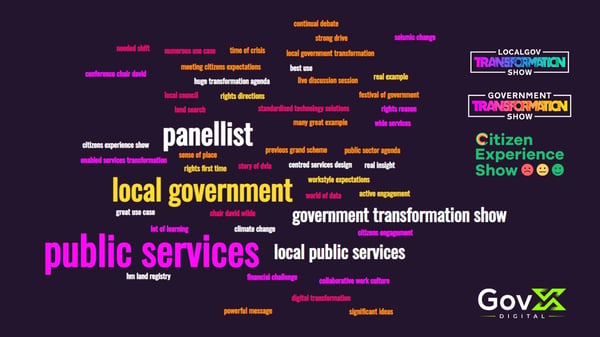7 Public Sector Transformation Trends to Watch in 2021
2020 will go down in history for defying all expectations and proving yet again what a volatile world we live in. But public sector leaders must still try to anticipate what comes next. Here are the outlines of some key themes and trends set to shape the year ahead in government transformation
Technology 1: Digitally able workforces
The public sector will place increasing emphasis on growing the digitally able workforce. Nobody is going to dispute that the tools and software that we have relied on in 2020 allow our people to be more productive and flexible.
The next big question is how can the public sector optimise that change? That will mean greater integration between smart technologies like virtual assistants and radically improved Wi-Fi in homes, linking back to our theme of what will offices of the future be for?
Technology 2: Data-powered policy-making
Another major area of change involving technology will be the increased use of data analytics - not simply talking about it, but using data in a far more meaningful way. There has been a lot of lip service paid to data in the past 10 years, but the reality hasn’t matched it.
The rapid development of the Covid vaccine has demonstrated the transformative power of data processing, and in the next 12 to 24 months, we’ll see that incorporated more into evidence-based policy-making. Advances in interoperability and APIs will allow integrated data sets to inform decision-making in the public sector.
Government at Work: What are public buildings for?
With public sector organisations increasingly embracing remote and hybrid working models, their existing office spaces are being rethought - what are those offices for? Why does the NHS need a building next door to a Council, or next door to The Department for Work and Pensions?
There should be a move towards more collaborative working spaces and community hubs. Public-sector organisations will reimagine front doors, recognising that the while the public do need face-to-face interactions, they don’t need to be in separate offices. A citizen should be able to deal with their primary care issues and housing issues in the same building. This is about the public sector working together and being more efficient in the use of its resources and real estate.
Re-imagining Towns and Cities: 15- and 30-minute places
Covid restrictions have forced people out of major cities, increasing focus on living, working and enjoying leisure in their nearest towns, leading to the re-emergence of the local economy.
If you look at Italy, the Netherlands and Australia, it's clear that the driver of this change isn't simply transport, it's really about quality of life. People want a better work-life balance and are no longer prepared to tolerate lifestyles dominated by travel and commuting to work. That leads to 15 and 30-minutes places, a great yardstick to understand how people are choosing to live nearer to the places where they work and play.
It will have a radical impact on urban design and placemaking, where the old urban sprawl - that made travelling from one part of town to another difficult - will not be tolerated. The five key elements in our lives - home, leisure, work, retail and schools - produce a domino effect that means they all need to be addressed together.
Directors of Planning and Environment in local authorities are rediscovering their role in shaping places in a far more holistic, joined-up way, and that will continue in 2021.
More Localised Public Service Delivery
Health and social care are leading the way in showing how the public sector could be delivering services in a more responsive, localised way.
The NHS Long Term Plan, published at the end of November, recommended replacing Clinical Commissioning Groups (that decide how three-quarters of the NHS budget is spent) with the Integrated Care System (ICS) model which pools budgets into a single commercial model with a political board that holds it to account.
With 70% of the country's population now under the ICS model that’s a powerful demonstration of how the coordinated approach can be more effective and efficient. We’ve seen other examples of this coordinated approach in areas with combined authorities and elected Mayors in the area of infrastructure development.
Devolution of decision-making is too much of a linear term, but what we are seeing is a reshaping of decision-making, with more local delivery and local accountability. It’s not driven by a political philosophy from Central Government, but rather by specific examples of service delivery demonstrating the value of a coordinated approach, which then feeds into more evidence-based policy-making.
Environment and Sustainability: Working towards 2030
Like any sector, the environmental agenda has a significant role to play in the development of the public sector. In 2021 that means making ambition reality - the Government has set out targets for 2030, so the conversation needs to change on the ground.
The sustainability agenda is a thread that runs through all of our other themes above. It’s evident in the development of smart houses, sustainable transport, energy production for both domestic and industrial use, the design of our towns and cities, and in the future of work.
That means we’ll see more innovative developments like the UK’s first all-electric forecourt for electric vehicles which opened in Braintree in Essex, and kinetic pathways like the one in London's Bird Street, where the movement of pedestrians generates energy to power streetlights.
For Central Government, these issues coalesce around the need to understand the future of energy. Through the sustainability agenda we're increasing renewable energy production - will we still have the same demand for new nuclear power stations?
Arguments for nuclear have focused on the need to plug gaps where renewable energy sources cannot meet demand. If increasing technical efficiency lowers consumption in industrial and domestic settings, will nuclear energy still be required at the same levels?
Post-Brexit Trade Arrangements
Local authorities will be heavily impacted by the future trading arrangements after Brexit kicks in.
-
The throughput of goods and services will have an impact on those authorities managing Free Ports
-
New arrangements for the movement of goods vehicles will affect management of transport infrastructure
-
Jobs and training needs will need to be reconsidered as the workforce supply is impacted by freedom of movement changes.
-
The impact on supply chains and the movement of goods will have further repercussions for public organisations’ ability to deliver its services as usual







